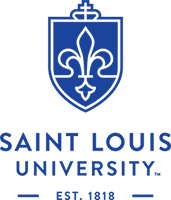Newswise — The field of genetics has seen astonishing breakthroughs and the development of world-changing technologies in the past half century. With such rapid progress, the field has likely raced well beyond the high school biology textbook your class used to study alleles, fruit flies and eye color inheritance.
Joel Eissenberg, Ph.D., associate dean for research and professor of biochemistry and molecular biology at Saint Louis University School of Medicine, shares a recap to get up to speed on the remarkable advances that are changing not only science and medicine, but also fields like forensics and ancestry.
Over the course of the last few decades, advances in genetics have shed light on inherited diseases, cancer, personalized medicine, genetic counseling, the microbiome, diagnosis and discovery of viruses, taxonomy of species, genealogy, forensic science, epigenetics, junk DNA, gene therapy and gene editing.
From Angelina Jolie’s proactive surgical strategy upon learning she carries BRCA cancer genes to Harvard University’s project to bring back woolly mammoth traits, Jurassic Park-style, to millions learning about their ancestry through genetic testing, technologies using principles of genetics now surround us.
Whether you’re foggy on the concept of “epigenetics” or just want to recap the high points of the science of genetics, check out Eissenberg’s overview of some of the most exciting advances in the last 50 years: Discoveries in DNA: What's New Since You Went to High School?
When Did You Go to High School?If you took high school biology in the …
1960s, you learned about the structure of the double helix and how sequences of DNA encode amino acids.
1970s, you may also have learned about cloning and the potential for recombinant DNA.
1980s, your class may have covered the clinical use of recombinant human insulin for diabetes treatment and the advent of GMO foods.
1990s, your class may have studied the molecular basis for human genetic disorders, like cystic fibrosis.
2000s, your teachers likely described how the human genome was being sequenced.
Established in 1836, Saint Louis University School of Medicine has the distinction of awarding the first medical degree west of the Mississippi River. The school educates physicians and biomedical scientists, conducts medical research, and provides health care on a local, national and international level. Research at the school seeks new cures and treatments in five key areas: cancer, liver disease, heart/lung disease, aging and brain disease, and infectious diseases.
